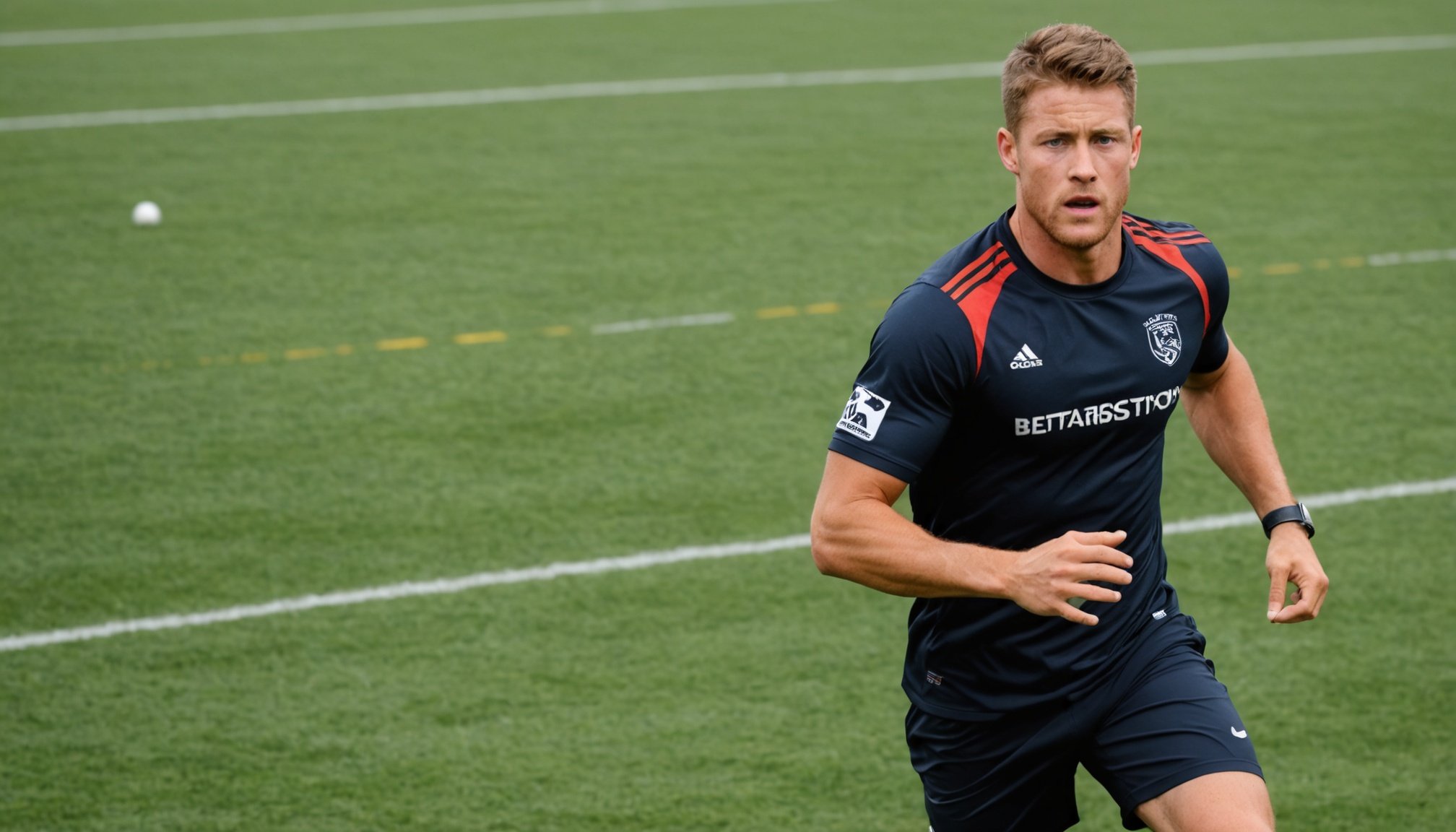Fundamentals of Dynamic Visual Acuity Training
Understanding dynamic visual acuity is essential for athletes who want to improve their performance in sports. This ability to clearly see moving objects is crucial, especially in fast-paced sports where quick reactions are required. Dynamic visual acuity enhances athletes’ ability to track and respond to changing visual stimuli, impacting both speed and precision in decision-making.
Visual processing plays a pivotal role in athletic performance. It encompasses how the brain interprets visual cues from the environment and makes split-second decisions. High-level athletes rely on refined visual processing to anticipate movements, strategize, and execute actions with precision.
Also to see : Building mental toughness: a comprehensive resource for training young athletes in sports academies
Effective training in this area involves several key components. Firstly, exercises aim to boost eye-hand coordination and accelerate visual reaction times. Techniques such as tracking drills and rapid recognition tasks are designed to challenge and develop these skills. Secondly, incorporating sport-specific scenarios into training ensures that visual acuity improvements directly translate to game situations.
In summary, dynamic visual acuity training is a multifaceted approach that blends visual processing enhancement with sports-specific applications, significantly elevating an athlete’s competitive edge. Emphasizing these fundamentals can profoundly impact performance across various sports disciplines.
This might interest you : Mastering the science of aerodynamic drag analysis in elite speed skating competitions
Practical Implementation Strategies for Coaches
Implementing coaching strategies can seamlessly integrate dynamic visual acuity training into athletic routines. Designing training programs is the first step. Coaches should incorporate activities that target specific visual skills, ensuring athletes receive a comprehensive training experience. Integrating sport-specific drills enhances relevance and boosts performance enhancement in practical scenarios.
Designing Training Programs
Successful integration begins with crafting tailored programs. Outline clear steps, such as identifying core visual skills applicable to the sport. Develop sample training schedules, incorporating exercises into existing routines progressively. This structured approach fosters athletes’ long-term adaptation and improvement.
Utilizing Technology and Tools
Modern technology supports training integration through apps and specialized equipment. Video analysis tools help assess visual performance, providing a data-driven perspective. Integrating these technologies with traditional methods creates a balanced training regimen, optimizing athlete benefits.
Collaboration with Sports Scientists
A collaborative approach with sports scientists ensures evidence-based practice. Establishing a feedback loop enhances the program’s effectiveness, allowing for continuous refinement. Case studies of successful coach-scientist partnerships highlight the value of such collaborations, demonstrating improved athletic performance through dynamic visual acuity training.
Benefits of Dynamic Visual Acuity Training for Sports Performance
Dynamic visual acuity training significantly enhances an athlete’s performance, offering several measurable benefits. Improved reaction times and decision-making abilities are two primary advantages. Athletes trained in this area respond faster to dynamic stimuli, which is crucial in competitive environments. Enhanced hand-eye coordination and spatial awareness movements are also notable. These improvements allow athletes to anticipate game flow better and execute actions with precision.
Furthermore, visual skills training paves the way for long-term benefits. Consistent training leads to sustained enhancement in athletes’ performance, reflecting in competitive results. Many have observed noticeable performance enhancement after integrating these exercises into their routine. The training equips them to better handle high-pressure situations, maintaining accuracy and speed under stress.
Not only does dynamic visual acuity training provide immediate advantages, but it also fosters ongoing development. As athletes continue refining their skills, their overall athletic prowess improves. This progression stems from the continuous stimulation and challenging visual environments athletes face during training. Hence, this method serves as a robust foundation for sustained athletic growth and excellence.
Case Studies and Examples
Examining real-world applications of dynamic visual acuity training highlights its value in enhancing athletic performance. Numerous success stories illustrate how athletes across various sports have significantly improved through this targeted training approach. For instance, tennis players adopting these techniques have noted marked improvements in their ability to track fast-moving balls, leading to better on-court performance. Similarly, goalkeepers in football have used dynamic visual acuity training to enhance reaction times significantly.
Analysis of Successful Training Programs
Successful training programs often share common attributes. They incorporate variability and sport-specific elements tailored to athletes’ unique demands. Such programs consistently use evidence-based practices to refine techniques, ensuring the athletes adapt well to dynamic situations. They involve regular feedback loops and adjustments in training routines to meet evolving performance goals.
Lessons Learned and Future Implications
From these case studies, we learn that customisation and attention to individual athletes’ needs are crucial. Implementing these insights can lead to innovative training methods in the future. Understanding these proven successes not only reinforces the validity of dynamic visual acuity training but also encourages coaches and athletes to continue exploring and adapting these practices for greater performance enhancement.
Research and Expert Opinions
Recent studies emphasise the evidence-based research supporting the effectiveness of dynamic visual acuity training in sports. For instance, research published in renowned sports journals demonstrates substantial improvements in athletes’ reaction times and decision-making capabilities. This body of work solidifies the validity of integrating visual skills training into athletic routines.
Interviews with experts in sports performance and visual training provide additional insights. Many specialists advocate for the inclusion of dynamic visual acuity exercises as part of comprehensive training programs. According to them, visual processing is a fundamental component of athletic performance, often underscoring the necessity of consistent visual training in enhancing an athlete’s competitive edge.
Emerging practices in the field reveal exciting trends. Discussions among professionals highlight innovative approaches, such as virtual reality simulations and specialised software, which offer new dimensions to training regimens. This ongoing dialogue encourages the adoption of cutting-edge tools that align with modern training needs.
The accumulating knowledge from these studies and expert opinions reaffirms the validity of training in improving athletic performance. This evolving landscape positions dynamic visual acuity training as a pivotal element in future athletic success.

